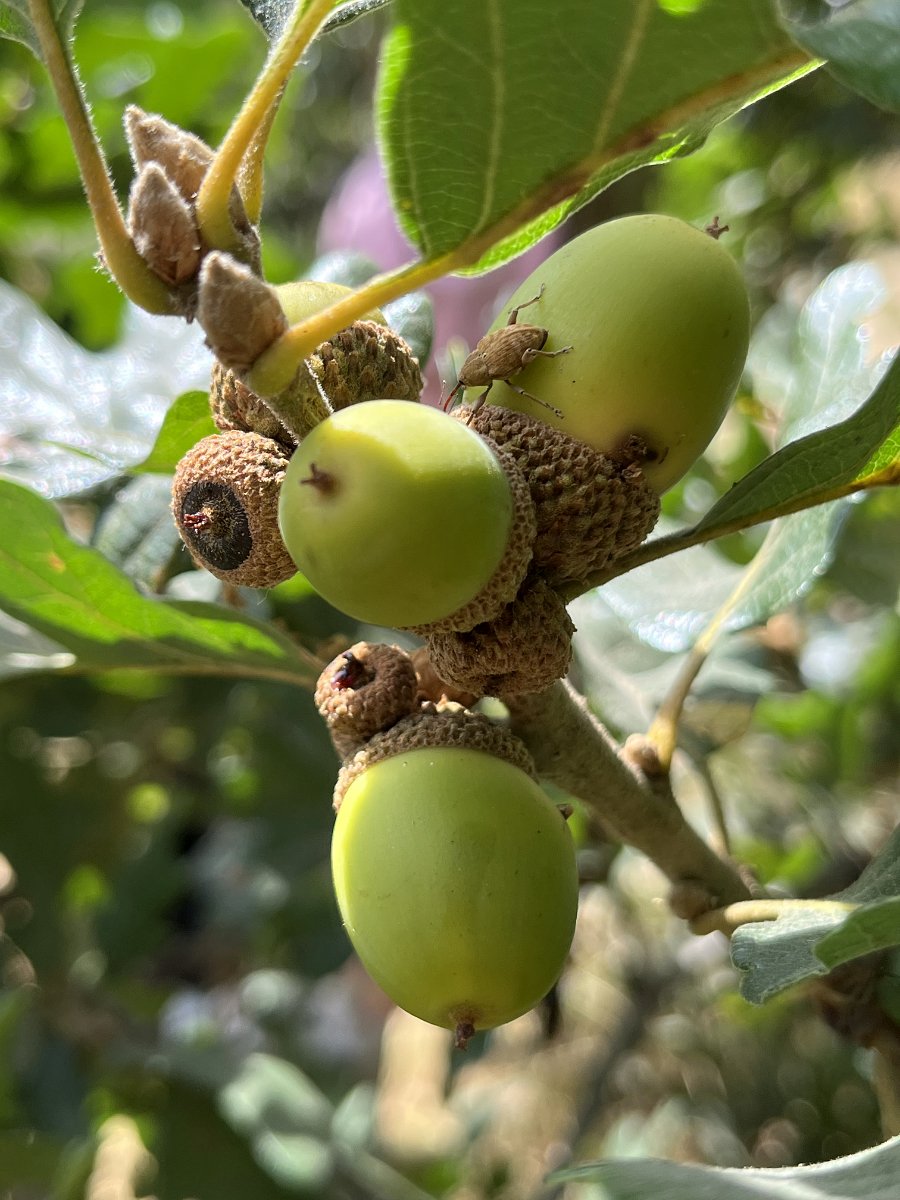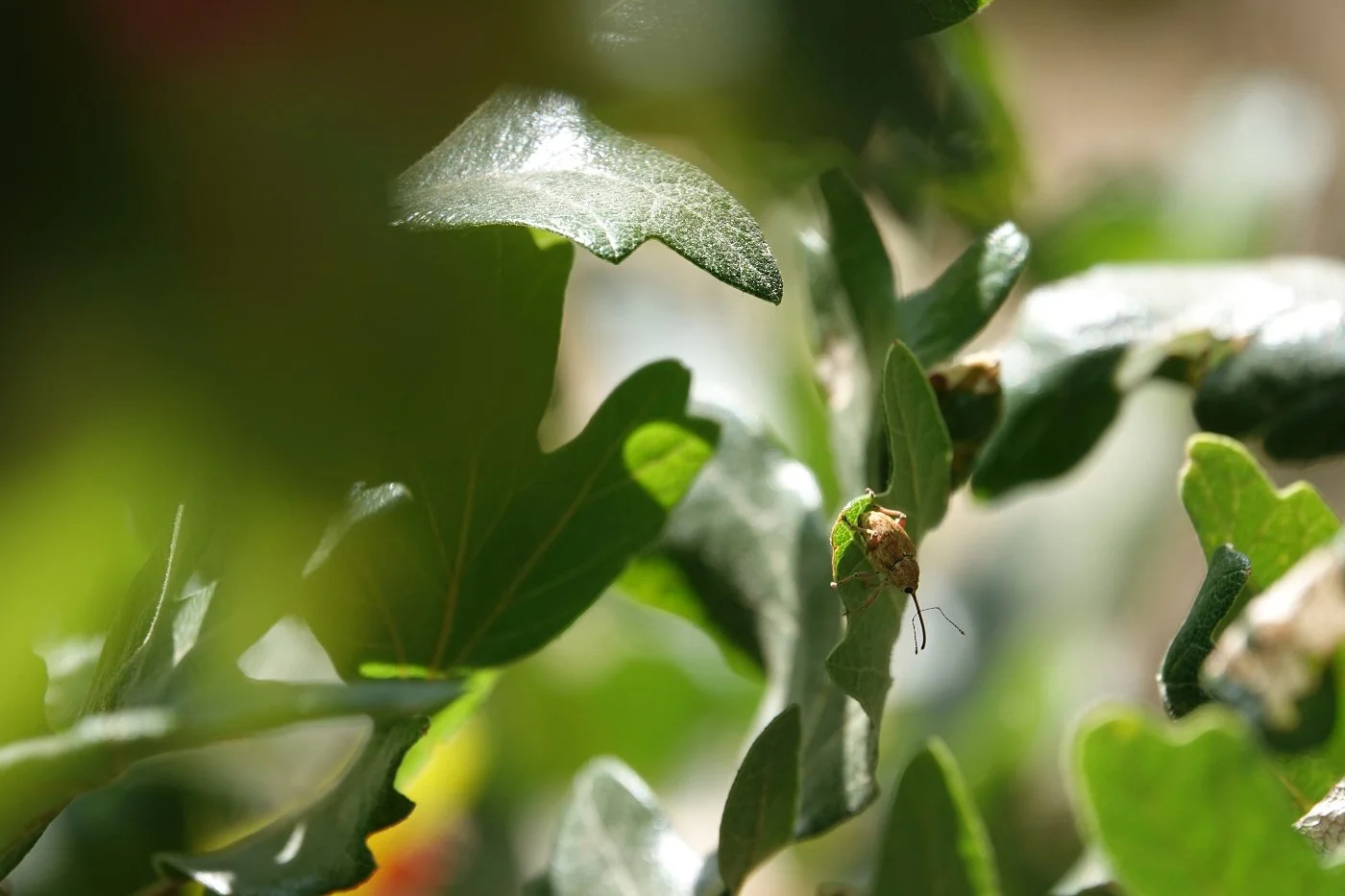I finally found an acorn weevil!
Whoop! Whoop!
This creature is amazing and for me, quite elusive. I have been looking for one for a couple-three years. I probably have spent 20 hours poking around acorns, leaves, and branches this year, if you can believe that. Plus, you have to wait for a good acorn year. And I read that some weevils can be nocturnal, so I checked in the evening light into the dark to see if acorn weevils were active at night. One last thing, its fuzzy, brown body is well-camouflaged against the acorn caps and it closely resembles the oak tree buds. So as you can see, this little critter can be challenging to locate. Finding this one was well worth the effort.
Right now the acorns are well-formed and a lovely shade of light green. Based on all the holes I see appearing in the acorns recently, this is the time when weevils seem the most active. It has a long snout extending from the front of its body called a rostrum. On the tip is its mouth that has tiny mandibles which it uses to chew into the acorn and eat the nut.
The female has a longer rostrum than the male so she can reach farther into the acorn to safely deposit her eggs. Once she chews her way into the acorn, eating as she goes, she will turn around and extend her ovipositor into the hole and lay a couple of eggs. You will see these holes located on the acorn next to the top of the cap.
The eggs hatch out surrounded by a nutritious nut and the larvae immediately began eating and growing. As the summer wanes and fall approaches, the acorns will turn brown and fall from the tree. The chubby little larvae will then chew their way out and tunnel into the ground. There they will form a small chamber and molt into a pupa where it will remain for two years. It will then molt into its adult form, climb out of the soil and start the reproductive cycle over again.
That’s not all, it gets better. On the photo below where the weevil is on the underside of the leaf, you can see its antennae which are located around the middle of the rostrum. Seemingly, this would be a problem as the weevil extends its rostrum down in the acorn as it eats. To get around this, the rostrum has side channels called scrobes. The bottom half of the antennae fold into these grooves which moves them out of the way and protects them as the rostrum extends into the acorn. See, I told you this creature was amazing.
I’m not sure how long the adult stage lasts, so if you want to try to see an acorn weevil, my advice is to head out there now. Have fun!
Oh, one last thing, I serendipitously ran into Karen Richards when I discovered this weevil. She writes the blog on Mt. Pisgah’s website and has her own awesome site where she writes about insects called Ticklehead. Check it out. It was great sharing this moment with her.



